Washing bath curtains in a washing machine
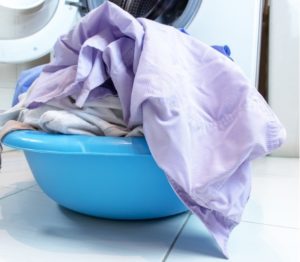 Despite the proximity of water and detergents, the shower curtain needs periodic cleaning. Drops of soap, limescale, skin particles - all this inevitably settles on the curtain. If the ventilation in the room is poor, the situation will be aggravated by the growing fungus. There are two ways out: either replace it with a new one, or wash the bathroom curtain in the washing machine or by hand. The second option is cheaper, so we'll focus on it.
Despite the proximity of water and detergents, the shower curtain needs periodic cleaning. Drops of soap, limescale, skin particles - all this inevitably settles on the curtain. If the ventilation in the room is poor, the situation will be aggravated by the growing fungus. There are two ways out: either replace it with a new one, or wash the bathroom curtain in the washing machine or by hand. The second option is cheaper, so we'll focus on it.
Let's use an automatic machine
You can wash shower curtains in an automatic machine, but follow certain rules. The first thing is to remove mold and adhering dirt from the film before loading it into the drum. This is done in two steps: remove it from the bar, unhook the rings and leave it in a warm foam solution. We wait a couple of hours, and then we go through the contaminated areas with a soft brush.
Having prepared the curtain, you can proceed to the actual washing. We load the curtain into the drum, add 2-3 more towels to fill the tank and set up the cycle:
- temperature - 40 degrees (sometimes 60 is allowed, as indicated by the corresponding icon on the label);
- program – “Delicate” or “Manual”;
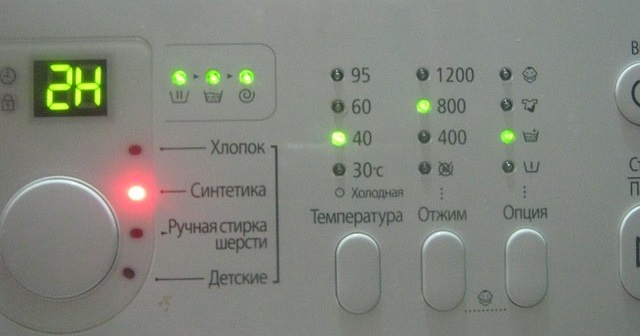
- spin – to minimum or turn off;
- automatic drying – turn off.
Spinning and drying are prohibited, since intense rotation of the drum and high temperature deform the material. Moreover, this is not necessary for curtains - just drain the water, shake the fabric and hang it up.
It is recommended that you wash your shower curtain every month and wipe it down weekly.
There will be no problems with detergent: both regular powder with gel and “homemade” cleaners are suitable for washing.So, soda quickly washes the fabric, to which you need to add about 250 g. It’s even better to pour 250 ml of vinegar into the machine at the rinsing stage to disinfect the curtain and remove any fungus remaining on the surface.
Let us remind you once again that it is better to unfasten the rings on the curtain before washing. If they are non-removable, then it is advisable to use a special mesh bag when placing the product in the drum. This way you can protect the machine from damage and prevent the loose fastener from falling into the tank or drain.
As a rule, manufacturers recommend washing curtains regularly, at least once a month. However, polyesterol, polyvinyl chloride and textile products also require intermediate care - weekly wet “cleaning”. It is important to ensure adequate ventilation to prevent mold growth.
Traditional wash
When it is not possible to wash the curtain in a machine, you will have to use your hands. How long it takes to hand wash depends on the degree of contamination of the fabric. If there are few stains and stains, then it is not necessary to remove the film from the rod and carry out express cleaning. The procedure is as follows:
- moisten the curtain on both sides using a watering can or spray bottle;
- Apply any product (liquid soap, dish gel, diluted powder or shower gel) to a soft brush or dish sponge;
- foam the detergent;
- thoroughly wipe the curtain, holding your palm on the opposite side (pay special attention to contaminated areas and the bottom of the curtain);
- leave the soaped cloth for 2-5 minutes;
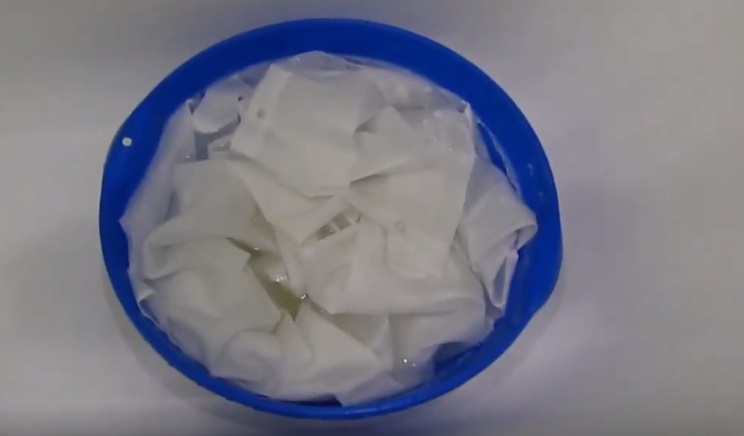
- rinse off the foam with warm water;
- evaluate the cleaning result, if necessary, repeat the treatment, removing the remaining dirty spots;
- Leave the curtains until completely dry.
If the curtains have not been washed for a long time, and stains and even mold have appeared on them, then a quick cleaning is not enough - a comprehensive procedure is needed. Depending on the degree of contamination and available products, one of three washing options is selected.
- Soak in lemon juice. First, the curtain is removed from the rings, placed on the bottom of the bath, moistened with warm water, and the dirty areas are sprinkled with soda. Then we wet the canvas again with a watering can, making a paste out of the powder, and go over the stains with a brush. Next, we move on to soaking: install the stopper, pour 10-12 liters and dissolve 3 bags of citric acid. Rinse and hang to dry.
- Use bleach. In advanced cases, it is better to give preference to professional cleaning products. But before use, it is recommended to study the tag and check whether the manufacturer allows bleaching. The cleaner is diluted strictly according to the instructions; on average, 1-2 caps are required for a standard basin. Soak the fabric in the solution for an hour, then wash it with a brush and rinse under the tap.
- Soak and treat with Vanish. Another option is to soak the curtain for 1-2 hours in a soapy solution, and then use Vanish according to the instructions. At the “finish” we rinse and hang.
Before any manipulation, it is recommended to study the label. Some materials, for example polyester, are easy to care for and can be washed without problems, while others are very capricious and demanding in terms of cleaning conditions.
Tips from the professionals
To ensure that the washing goes without any unpleasant surprises, it is recommended that you familiarize yourself with useful tips from professionals. Knowing a few secrets and nuances, it is easy to speed up the cleaning process and reduce the risk of damage to the material to a minimum. We are talking about the following rules:
- do not wash the curtain as an ordinary thing, do not rub the fabric against the fabric (otherwise the fibers will deteriorate and become deformed);
- For cleaning the canvas, a foam sponge, an old toothbrush, or a soft cloth are suitable;
- It is forbidden to iron the shower film - it cannot withstand high temperatures;
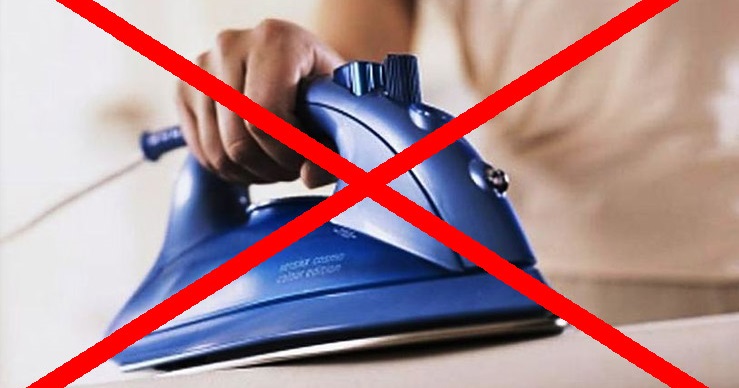
- The curtain is dried in a vertical position naturally (without ultraviolet radiation or heating devices).
There is one more trick that will help keep your curtains clean longer. So, if you rinse the curtain in salted water for the final time, a film will form on the surface of the material, preventing dirt and dust from settling.
How to remove complex stains?
Complex stains and mold growth cannot be removed with soap. To remove them, stronger means are needed - folk or professional cleaners. So, you can clean curtains made of polyester, polyvinyl chloride and impregnated textiles from heavy stains and fungus with the following powders and liquids:
- lemon;
- acetic acid;
- baking soda;
- ordinary powder, dry or liquid;
- bleach (Vanish and others).
The shower curtain cannot be wrung out, ironed or dried on a radiator.
If the material is not prohibited from being cleaned with chlorine-based products, then Domestos or another affordable analogue does an excellent job of removing ingrained mold.. The main thing is not to use strong cleaners when washing colored curtains, since the bleaching components wash out the pigment, discoloring the material. Let's not forget about safety precautions. Chlorine-containing compounds can only be used in a ventilated area and wearing personal protective equipment.
Interesting:
Reader comments
- Share your opinion - leave a comment
Categories
Washing machine repair


For buyers

For users

Dishwasher




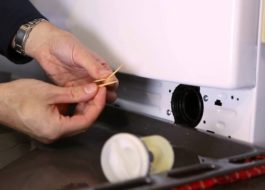

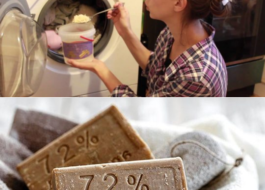










Add a comment